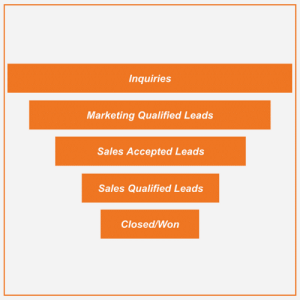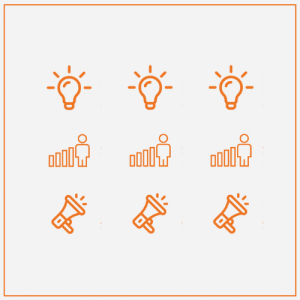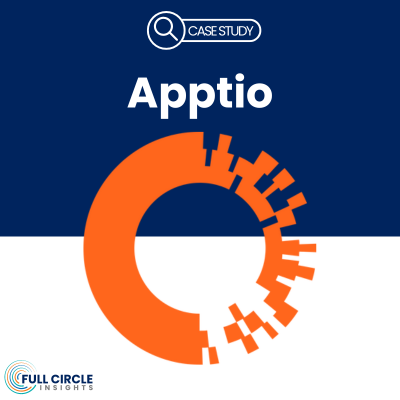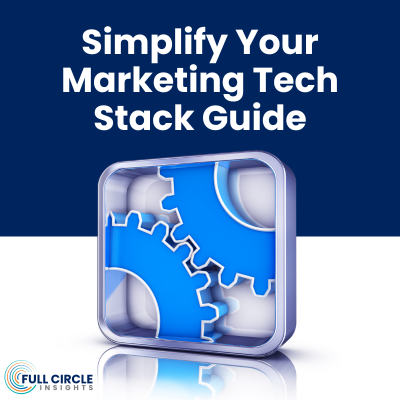Full Circle Insights recently hosted the Geeks Make More Money: Building a Data-Driven Marketing Culture webinar where we broke down why our math teachers were right all along – numbers really are important!
Many marketers don’t consider themselves “numbers people” (this marketer included), but like it or not, it’s a big part of the job. We’re expected to prove the value of our campaigns and strategies and we simply can’t do that without understanding data. Luckily, that’s a mindset we can cultivate: In a data-driven marketing culture, quantitative analysis feels as natural and necessary as breathing.
What Does it Mean to Have a Data-Driven Culture?
A data-driven culture is the collective behaviors and beliefs of people who value, practice, and encourage the use of data to improve decision-making. As a result, data is woven into the operations, mindset, and identity of an organization.
A Data Culture equips everyone in your organization with the insights they need to be truly data-driven, tackling your most complex business challenges.
So, how do you get there?
- Practice data driven behavior
- Value strategic data use
- Encourage sharing and community
- Encourage experimentation, failure, and speed
In the webinar, we dug into what these bullet points mean and discussed best practices for success.
Five Steps to Build a Data-Driven Culture
From the article 10 Steps to Creating a Data-Driven Culture on Harvard Business Review
1. Data-driven culture starts at the (very) top
Being data-driven is the responsibility of everyone in the organization and it’s up to leadership to reinforce excitement and interest in data.
2. Choose metrics with care — and cunning
When determining what metrics you want to report on, ask yourself the following questions:
- What metrics are going to help the most?
- What will help build a data-driven culture?
Not everyone will understand a giant spreadsheet full of data so what are the most important things people need to know?
Example: In demand generation we measure the conversion rate between demo and closed one business. It’s clear that both demos and closed one business are important, so it is vital that everyone understands the process of getting from one to the other.
3. Don’t pigeonhole your data scientists
Data Scientists must think beyond marketing and sales. They also must think beyond go-to-market. It’s important that Data Scientists don’t work in a vacuum – building a data driven culture requires communication throughout the company (and possibly to customers and partners) about data. Understanding the business as a whole provides an opportunity to focus on the bigger picture.
4. Trade flexibility for consistency in the short term
Companies can waste countless hours trying to reconcile subtly different versions of a metric that should be universal. As important as flexibility is, you must first establish a baseline, processes, and expectations.
5. Get in the habit of explaining analytical choices
Explaining analytical choices gives everyone a deeper understanding of the data and opens the door to a broader discussion.
- What worked?
- What didn’t work?
- What was the alternative?
- Why did you choose this approach over another?
Simply put, explaining analytical choices makes everyone more invested, provides room to make adjustments, and strengthens our own understanding and skills.
Scaling and Data-Driven Culture
Building a data-driven marketing culture really starts to amp up at a businesses scaling phase. Why? Because at the scaling phase, they are big enough to understand data-driven culture, have enough revenue to properly build one, and likely have the following established:
- Regular KPI’s that are examined and analyzed consistently
- Processes that improve efficiency and communication
- Technology that helps people do their job better and drives revenue
- Experienced employees with specific skill sets
Use Data to Tell a Story
The more you learn about your customer, the easier it is to reach them. Data tells each customer’s story and helps us understand them better. Understanding your customers earns their trust and helps you sell directly to their pain points and needs.
How do you get to the point where you’re really using data to tell a story? Let’s break it down.
Step One: Align Funnel Stages
To effectively analyze prospects and current customers, it’s important to have alignment and consistency in your sales and marketing funnels. As funnels evolve, usually along the maturity curve, more stages and customers enter the picture – this is a healthy and natural part of the process.
When you’ve established sales and marketing funnels, determine which ones are directly associated with specific campaigns and build out your segments.
The 2006 Forrester Waterfall Funnel Model is basic but effective:
- Inquiries
- Marketing Qualified Leads
- Sales Accepted Leads
- Sales Qualified Leads
- Closed / Won

Step Two: Identify Patterns and Trends
Building a data-driven culture is a team sport and everyone on the team needs to be invested in the entire sales cycle. Caring about the entire pipeline helps understand what drives closed deals and attribution.
With Salesforce data, the intent is to create a single source of truth – where marketing, sales, and rev ops are all working off the same information. A single source of truth helps effectively identify your most effective campaigns and where adjustments need to be made.
Step 3: Align on Attribution Models
We’ve all been there before: you’re in a meeting and are asked how a specific campaign performed. The problem? You have conflicting information or you don’t have the info they’re looking for. This is where establishing a standard attribution model across your organization comes in.
Attribution models provide a simple way to gain insight into campaign performance, identify trends, ensure accuracy, and align on the results.
While there are hundreds of models available, below are a few of the most commonly used.
Popular Attribution Models
- First Touch: Gives credit to the first interaction a customer has with the brand or the marketing campaign. It emphasizes brand awareness and initial engagement.
- Last Touch: Attributes the entire conversion to the last touchpoint before the customer completes the desired action. It highlights the most recent marketing action that led to the conversion.
- Multi-Touch: Distributes credit across multiple touchpoints in the customer journey, considering various interactions that influenced the final conversion.

Popular Multi-Touch Attribution Models
- Even Spread Model: Show the impact that all content and messaging had during an extended sales process. It’s also ideal if you want to know how your the ways that your touchpoints work together to influence a deal
- “U” Shaped Model: This model gives the first and last touchpoints in the prospect’s journey more credit than the touchpoints in the middle, making it perfect if you want to focus on the impact of the first and last of your multiple touchpoints.
- “W” Shaped Model: The “W” model gives credit to the first, last, and middle touchpoints in the prospect journey. Use it to understand conversion touchpoints as well engagement touchpoints.

Presenting Data to the Team: The Full Circle Method
The Full Circle Method is a measurement methodology that focuses across the four key decision-making spectrums a marketer might have to work on:
- Planning – I need to review what’s happened in the past to plan for the future.
- Achieving – Am I achieving the goals we established?
- Optimizing – Where are my processes performing well and where can they be improved?
- Evaluating – What can I do to contribute value to my business?
Build Impactful Marketing Campaigns By Building a Data-Driven Culture
Understanding your Salesforce data is key to understanding your business and target audience. By creating a data-driven culture, you also create opportunities that will have a positive impact on revenue.
» Find out more by watching the Geeks Make More Money: Building a Data-Driven Marketing Culture webinar from Full Circle Insights.



